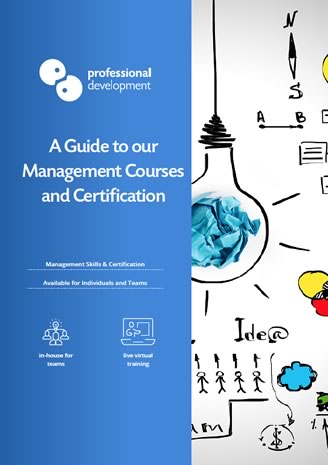The DMAIC process is at the heart of effective process improvement. It can also be referred to as a “cycle” or “model”.
It takes several days of lean six sigma training to really get into detail and learn about how to use the DMAIC process. This article is designed to give you a quick overview of what is involved.
We cover:
- What is the DMAIC process?
- Why is it important?
- 5 stages of the DMAIC process
- How to use the DMAIC process
- Advice & Resources
What is the DMAIC process?
DMAIC is a sequence of 5 stages that acts as a logically structured framework for correctly implementing improvements to any process.
Its logical progression makes it a crucial centre point in both lean and six sigma methodologies.
DMAIC stands for:
- Define
- Measure
- Analyse
- Improve
- Control
Why is it important?
As mentioned above, DMAIC follows the practical sequencing of improving any given process.
The carefully designed steps ensure that all aspects of the process that should be considered are correctly evaluated. A natural progression through the cycle also provides for devising and implementing appropriate improvements.
Without using this sensible approach, the structure and positive outcome of your process improvement initiative can be significantly weakened.
5 stages of the DMAIC process
Define
The first stage is devoted to defining objectives for the project.
The team will identify what needs to be done, or what the problem is and clearly outline what they hope to achieve.
Measure
Once you have successfully completed the Define stage, you can begin to measure the current state of the process and productivity.
It is always worth devoting a significant amount of time to this phase in order to gather detailed and useful information.
Analyse
Next, the data from the Define and Measure stages is analysed.
Using the information gathered during the Define and Measure phases, the team will begin to analyse the data thoroughly.
This Analyse stage is crucial for fully understanding what causes problems or low productivity.
Improve
Using all of the data collected, you will begin to come up with strategies for improving how things are done. This is where the Improve stage kicks in.
Improve is the stage where you actively start to implement change and improvement.
Control
The Control stage is equally as important as the Improve phase.
It is not enough to implement improvements; you also need to maintain the new level of productivity and efficiency.
Using the techniques within the Control phase enables you to do this on an ongoing basis.
How to use the DMAIC process
If you wish to begin using this tried-and-tested approach within your work, it’s very important to learn how to apply it properly.
Attending a lean six sigma course that covers the DMAIC model in detail equips you with the capability you need to begin utilising the cycle correctly.
Here are two excellent options to choose from:
Lean Six Sigma Yellow Belt – 2 Days – A Practical Introduction
Popular with those who want a quick introduction to lean six sigma, our 2-day yellow belt course aims to familiarise participants with each stage of DMAIC.
You will gain:
- A working understanding of the DMAIC process
- Skills you can begin using within your work
- A lean six sigma yellow belt certification
This is a live virtual classroom course delivered by lean six sigma experts. “Live virtual” means that it mirrors an in-person classroom experience online.
You can ask questions, take part in discussions, and receive feedback from your tutor.
Lean Six Sigma Green Belt – 5 Days –In-Depth Training
Also suitable for those who are new to lean six sigma, our green belt course is perfect for anyone who wants more in-depth knowledge and skills.
This course is also delivered in a live virtual format. Our lean six sigma trainers are certified professionals who bring a wealth of real-life experience to every course.
Training for Teams: Customised for Your Business
If you would like to begin introducing a continuous improvement ethos to your team, customised, in-company training is the best option.
With in-company training, we will deliver a programme specifically tailored to support you in achieving your business goals.
Advice & Resources
Talk to Us
If you would like guidance on the best next steps for your lean six sigma training, we can help.
Get in touch with our experienced consultants by phone (Freephone 1800 910 810) or by asking a question online.
We can provide advice tailored to your situation and the goals you have for your training and certification.
Further Reading
The articles below are great follow-on reading choices from this DMAIC process introduction:
Get a PDF Guide
Instantly download our complete guide to lean six sigma using the button below.
This detailed guide includes more information about lean six sigma, how it works, and how you can achieve a certification.


